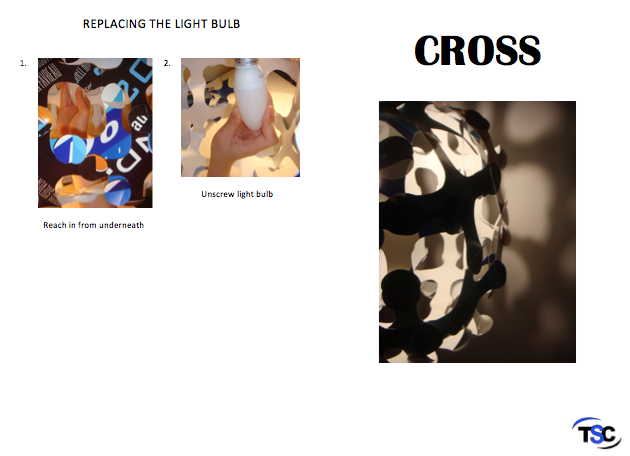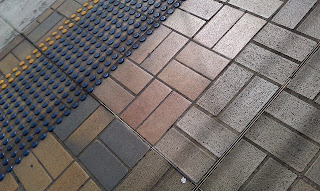Week 2
For this poster mash up assignment I decided to look through artworks and photographs in order to find a suitable and clear image to complete this assignment. I eventually found a black and white photograph of an Aboriginal man who was throwing a boomerang. By changing the object he was throwing I could change the context and era that this photo was taken. I replaced the boomerang with a vortex, a popular toy that whistles as it's thrown through the air. This object is commonly used in the park and on the beach, amongst friends, family and with pets. This would show how instead of hunting for food the character was enjoying his time, on a sunny day with his family. I printed it on gloss paper and mounted it so that it would still have its photographic quality. It would also portray the assimilation symbolised by enjoying the activities of the European and buying their toys.
Week 3
The group colour project was due this week. With 15 sectors and 16 people in the group, Vonnie and I decided to group up and assemble the "red orange" sector. By collecting everyone's contact details and handing them out on slips of paper and texting them, each individual could discuss with the alternate groups, to achieve the right tones. We also met up a few days before it was due to stick the already cut out squares onto our individual sectors. With the colours of:
- ultramarine
- prussian
- blue green
- green
- yellow green
- lemon
- cadmium
- yellow orange
- orange
- red orange
- vermillion
- carmine
- red purple
- purple
and blue purple, we completed our colour wheel.
As not everyone turned up and contacted their friends the tones and shades were not consistent across the colour wheel, and also the method of tearing or cutting our squares. Overall it was a successful assignment as we were all able to complete our designated sectors and create a whole colour wheel.
Week 4
From week 2 we were given a designer to research. We were firstly asked to design a poster for an exhibition at the Powerhouse Museum, from our designers' point of view. So using the black and white style of Marcel Wanders, and incorporating his curve on a lace iconic design, I presented an A3 poster. But my poster could've been freer in style and design as Marcel Wanders uses more curves and organic forms. We were then asked to create static and dynamic patterns using iconic shapes, which are used by our designers. For the week after we painted our dynamic patterns, one in black and white and another in a set of complementary colours. I used the tones and shades of my colours in order to show the radiance of light, because one of the shapes I picked was Marcel Wander's lamp. Eventually we created 2D reliefs using our coloured patterns and a 3D model. The relief was hard to fit on an A3 stiff board. While I wasn't able to achieve an organic shape for my 3D model, as the cardboard shapes could not be successfully joined at different angles, without leaving a gap. This was all completed by the end of week 6.
Week 7
For week 7 there were 2 things to hand in, one for Communications!, an engineering drawing of an object and a 3D model of our chosen subject. Half our 3D model was constructed from foam core or cardboard, and the other half by blue foam. I chose an electric hand mixer/egg beater, the foam core was sliced into vertical structures with horizontal supporting structures, while the blue foam was cut into layers and sanded. The beaters proved to be difficult as the blue foam became very fragile as it became thinner.
For Design Fundamentals our group project on the environment was due. We were given Central station, and with each of our 5 postcards, were were asked to create an overall picture. We decided to use the symbolism of gum, to show the busy and messy Central Station. I use the mediums of water colour pencil, collage and sketching to design my 5 postcards.
Then we entered Easter break.
Week 9
During our mid-sem break we met up to assemble 50 images of our movement 'Rest'. Our group consisted of 9 girls: Vonnie, Ginny, Christine, Christina, Tina, Rowena, Kirsty, Vivian and I.
We also completed our Past, Present and Future Essay on Hidden Stories: Product History. As I am a Hip Hop dancer, I decided to focus on my favourite shoes, Air Force 1, released in 1982.
On Thursday we also had an in class assignment for Model Making, which we had to hand in. This was created within 4 lessons out of blue foam. We were given an engineering drawing explaining all the parts and dimensions of a radio speaker. During class time we were asked to create each piece, cut them, sand them and assemble them together in order to prepare us for our last assignment, where the model would be made out of wood.
Week 10
In week 10 for Fundamentals we continued our group work in order to create a short animation of our movement. For this week we thought about our story board, and in week 11 we handed in our story board, where we had presented our idea of going to the beach and filming a paper boat floating off into the horizon as the water became darker and darker, to portray our idea of rest. The tutors liked the originality of the idea but sait it would be too hard to complete. We changed our idea, to dropping food dye into the water and watching it disperse until it came to rest. Luckily we did as the whole next week was filled with rainy days, so we couldn't have completed our initial idea of filming at the beach.
Week 12
Piranesi was our second last assignment for Fundamentals and we were given about 6 weeks to complete it. Firstly we were given an A3 design of a Piranesi work, and told to incorporate this image into our own A1 design of Piranesi, where we could set it in an imaginary world. I decided to base it around an underwater theme, where there were sea animals, a submarine, coral and a stone castle. I started out by test strips where I experimented with pens to achieve a Piranesi style. I also drew the Piranesi image I had chosen to get an overall feel of the style and depth of the image. I then over-layed A2 sheets of tracing paper to construct the whole idea of my underwater world, and getting the perspectives right. I completed research into animals and castles from the 14th Century. I then explored were the lighting should com in and out and the overall composition. After this I added sea creatures and plants to the foreground and surrounding areas, and incorporated sharks and turtles within my castle. I found it complicated to draw the dirt floor but I tried to present my idea through contour lines and lines representing where the light would hit the sea floor.
Week 13
The last week of sem was filled with lots of assignments and a quiz. My Moving Pictures flip book and engineering drawing completed on CAD was due on Monday. I had decided to do nail clippers as it's a common household object. I ended up showing the motion of the nail clippers through 48 slides where I had printed them, then mounted them on green paper, and glued together to construct a flip book using PVA.
On Tuesday our Product Family Tree and quiz for Past Present and Future had arrived. I based my product family tree on a blu-ray portable dvd player. I printed off my pictures and captions and glued them onto a black A3 foam board, this proved to be hard as I had forgotten how small A3 really was.
By Wednesday our Design Resource Books were due and our animation of 'Rest'. We constructed a home made set, where the fish tank was surrounded by us holding pieces of white cardboard, in order to reduce reflections from the fish tank and water. We had an original idea for our film but we didn't realise that the camer was set on auto focus, and so it resulted in a blurry animation.
Finally our last day of semester 1, concluded with our Appearance Model Project, where we had spent endless hours measuring, cutting, priming, sanding, painting, sanding, painting, sanding and gluing our wooden speaker models.



































